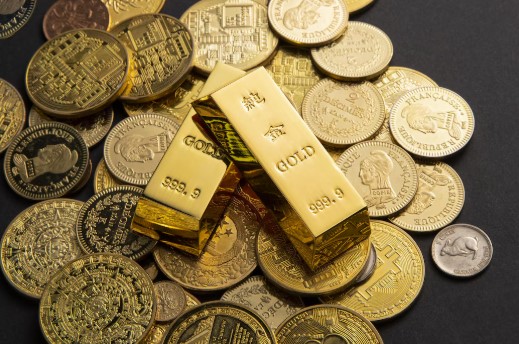Gold in India is not merely adornment. It is a statement of lineage and security, often held first by the women of the family.
Indian women together are estimated to own nearly 24,000 tonnes of the metal. This is more than the combined official reserves of the five largest gold holding nations and adds up to roughly 11% of global supply.
This depth of ownership is why policy, family custom and even tax rules make space for it. For many women it is the one asset that can be mobilised in distress, converted into liquidity or passed across generations without dispute.
Rising Industrial Demand for Gold
Jewellery and investments continue to define how Indians perceive enduring worth. Yet current figures reveal a more layered narrative. The World Gold Council recorded a 5% rise in national consumption during 2024, reaching 802.8 tonnes compared with 761 tonnes in the prior year.
Between July -September, however, volumes receded by 16% to 209.4 tonnes even as soaring prices lifted the overall market worth by 23%. The contrast underscores how sentiment and scarcity often move in opposite directions but still preserve the metal’s allure.
Across global markets, its influence is no longer limited to adornment or reserves. Gold now powers electronics, renewable technologies, and advanced medical instruments. Annual technology consumption added 21 tonnes in 2024, a 7% rise driven by accelerating AI integration. Gold’s industrial use complements its status as a financial asset, giving it a dual role in modern markets.
Gold as a Hedge for Central Banks and Its Global Holdings
Gold offers what fiat currencies and sovereign debt cannot: independence. It holds no credit risk, isn’t linked to policy shifts, and can’t be frozen or sanctioned. For central banks, it’s a reliable shield in a world of rising debt and global uncertainty.
Why central banks hold gold
- It protects reserves from inflation, currency volatility and external political pressure
- It reduces exposure to dollar-linked assets and enhances monetary autonomy
- It retains value when bonds lose appeal due to fiscal or geopolitical risk
Recent trends confirm this shift in global behaviour. Combined official holdings now hover around 36000 tons, surpassing the worth of global Treasury assets. The pace of acquisition continues, with close to 900 tons expected to be added through 2025, marking yet another year of consistent accumulation. Around three-quarters of central banks plan to increase allocations within the next five years, a clear indication of diminishing confidence in fiat assets.
Gold Price Movement and Returns
Gold prices in India have shown strong upward trends, especially over the last decade. The average price per 10 grams rose steadily from about ₹28,000 in 2014 to a peak of ₹1,12,000 in Oct 30 2025. Notably, gold prices jumped sharply around 2020–2021 amid pandemic uncertainty and economic stimulus measures, continuing an overall upward trajectory fostered by inflation, geopolitical tensions, currency fluctuations, and central bank buying.
The chart below illustrates this 10-year price movement trend:
The latest World Gold Council datasets for central bank gold holdings reveal that:
- Central banks have accumulated over 1,000 tonnes of gold annually in each of the last three years, a significant rise from the 400–500 tonne annual average seen in the prior decade.
These datasets and trends are detailed in the World Gold Council’s Central Bank Gold Reserves Survey 2025 and the Gold Reserves by Country interactive database, offering the most current and comprehensive central bank gold holding data globally.
Central banks worldwide collectively account for about one fifth of all gold ever mined, highlighting their continued commitment to gold as an essential reserve asset.
The World Gold Council maintains and publishes continuously updated gold reserve data by country, sourcing statistics from the IMF International Financial Statistics (IFS) and official filings. This dataset tracks annual and monthly reported purchases and sales, and also shows gold as a percentage of each country’s total international reserves.
Is Gold a Good Hedge Against the Stock Market?
When markets lose rhythm, investors turn to what endures. Gold holds that reputation because its worth is detached from corporate earnings or policy cycles. It neither defaults nor depends on sentiment. Its scarcity, permanence, and universal acceptance give it a steadiness that paper assets often lack in turbulent times.
The data underlines this pattern clearly. From April 2007 to February 2025, the Nifty 50 generated annualised gains of about 10.5% with steep drawdowns nearing 59%. A balanced mix of equities and gold produced roughly 12.3% returns, while limiting the fall to nearly half. The difference lies in behaviour, when shares falter, the metal tends to strengthen as investors seek preservation over growth.
This inverse movement is not coincidence but a function of trust. In phases of economic slowdown or currency weakening, capital shifts from financial assets to tangible stores of value. The outcome is stability when volatility dominates. Gold does not chase returns, it cushions them, allowing portfolios to breathe through uncertainty.
Conclusion
The metal continues to hold a singular place in the Indian woman’s sense of security and identity. Its meaning flows through inheritance, ceremony, and personal pride, yet its significance now extends well beyond ornamentation. Demand from households persists, while new industrial and technological uses have broadened its purpose.
On the global stage, it serves as the quiet foundation of monetary strength. Central banks regard it as protection from inflation, debt cycles, and political friction. For individual investors, it tempers portfolio swings and preserves capital when equities turn uncertain.
What began as a cultural mark has evolved into an economic constant. It connects personal memory with national policy, merging sentiment with strategy. That balance between emotion and endurance keeps the metal firmly embedded in India’s life and the world’s financial order.
DISCLAIMER: The information given in this blog is for educational purposes only. Any content of this blog is not investment advice.
- Nifty & Sensex — how to get live updates quickly - November 4, 2025
- Not Diamonds, Gold is the Indian Woman’s Best Friend Forever - October 30, 2025
- IdeaForge, Paras Defence, BEL, HAL – Defence & Drone Push Offers Compelling Narratives - October 7, 2025





